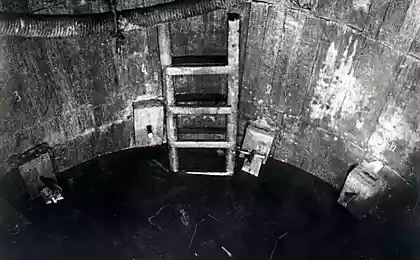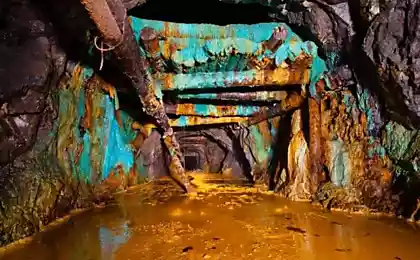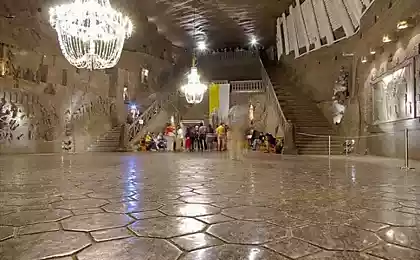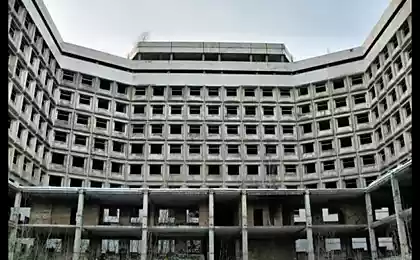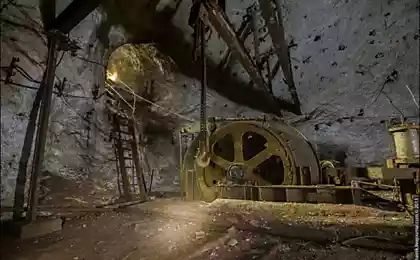1634
Abandoned diamond mine Peace
Mine is a former Peace open diamond mine located in Mirny, in Eastern Siberia. During its closure in 2004, the mine reached a depth of 525 meters and 1, 200 meters wide, making it the second largest excavated hole in the world, after Bingham Canyon Mine. The hole is so large that the airspace above the mine is closed for helicopters because of the incidents in which they were drawn downward air flow.
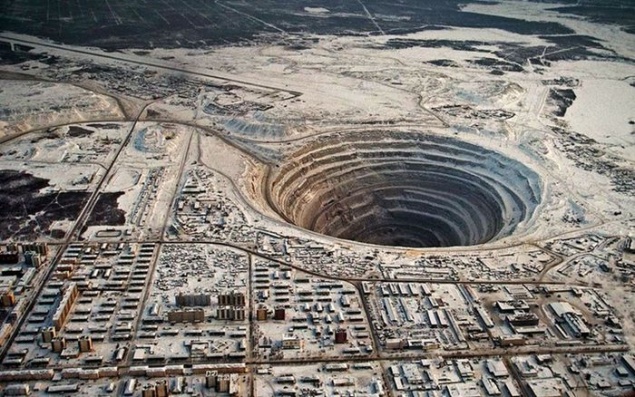
Mining began here in 1957, in an extremely harsh climate conditions. Siberian winter lasted seven months, that froze the ground, making it as hard as concrete. During the short summer months, the permafrost would have turned into mud, making the entire mineral extraction swimming in a swamp. Buildings had to be raised on stilts so that they are not flooded in the summer. The main processing plant had to be based on solid ground, found at a distance of 20 km from the mine. Winter temperatures were so low that car tires and steel were destroyed, and the fuel freezing. During the winter, workers used jet engines to warm permafrost or blasted it with dynamite to access the main kimberlite. The entire mine is completely covered at night to prevent freezing equipment.
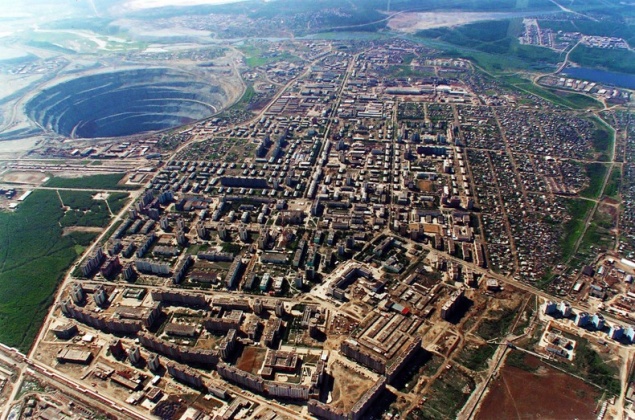
During the peak years of operation the mine produced 10 million carats of diamonds annually, of which a relatively high portion (20%) had the quality of a gemstone. This worried the company De Beers, which in those days was distributing most diamonds in the world. The company was forced to buy large batches of high-quality Russian diamonds to control the market price. For the De Beers mine Peace was mysterious and frightening mystery. Huge amounts of products were not compatible with the relatively small size of the shaft. By the 1970s, when the world was supposed to produce a smaller and smaller amount of diamond tips only increased supply of precious stone. Finally, in 1976, De Beer asked for a tour of the mine to satisfy their curiosity. Permission was given, but the Russian continued to delay the visit and the time when the team reached the delegates mine, their visas have expired. They had only 20 minutes to visit the Peace. Visiting gave nothing to shed light on the mystery of diamond production.



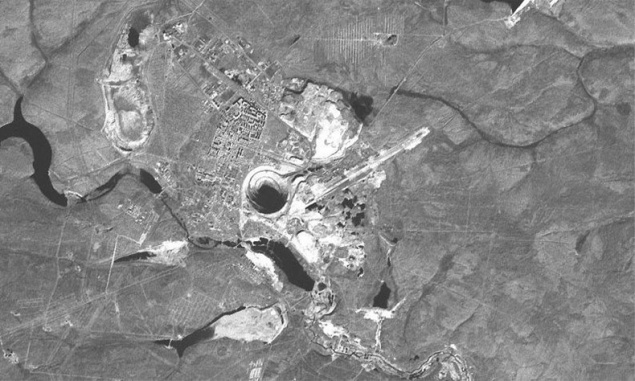
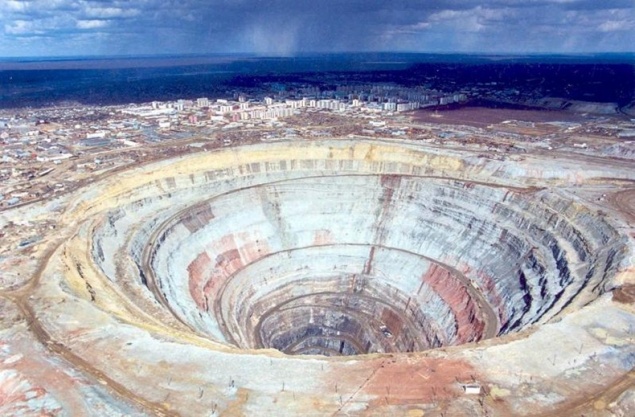
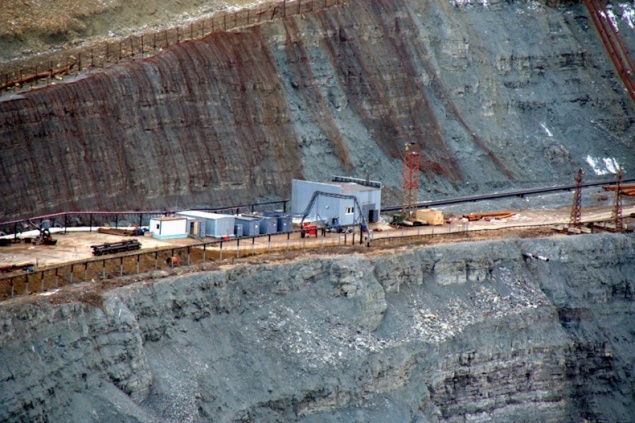
Source: na-planete.ru

Mining began here in 1957, in an extremely harsh climate conditions. Siberian winter lasted seven months, that froze the ground, making it as hard as concrete. During the short summer months, the permafrost would have turned into mud, making the entire mineral extraction swimming in a swamp. Buildings had to be raised on stilts so that they are not flooded in the summer. The main processing plant had to be based on solid ground, found at a distance of 20 km from the mine. Winter temperatures were so low that car tires and steel were destroyed, and the fuel freezing. During the winter, workers used jet engines to warm permafrost or blasted it with dynamite to access the main kimberlite. The entire mine is completely covered at night to prevent freezing equipment.

During the peak years of operation the mine produced 10 million carats of diamonds annually, of which a relatively high portion (20%) had the quality of a gemstone. This worried the company De Beers, which in those days was distributing most diamonds in the world. The company was forced to buy large batches of high-quality Russian diamonds to control the market price. For the De Beers mine Peace was mysterious and frightening mystery. Huge amounts of products were not compatible with the relatively small size of the shaft. By the 1970s, when the world was supposed to produce a smaller and smaller amount of diamond tips only increased supply of precious stone. Finally, in 1976, De Beer asked for a tour of the mine to satisfy their curiosity. Permission was given, but the Russian continued to delay the visit and the time when the team reached the delegates mine, their visas have expired. They had only 20 minutes to visit the Peace. Visiting gave nothing to shed light on the mystery of diamond production.






Source: na-planete.ru

